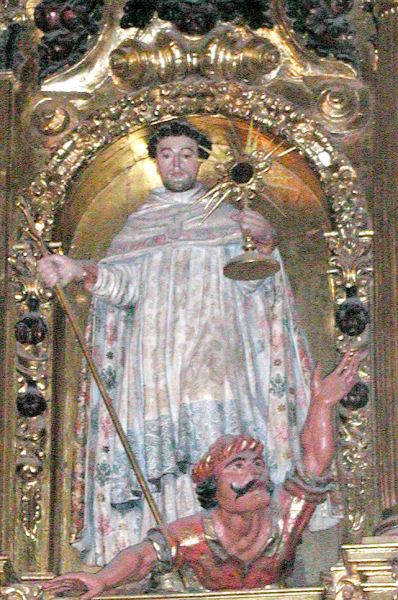
St. Thomas Aquinas
1713
Wood and polychrome
Cathedral of St. Mary, Pamplona
This statue can be identified as St. Thomas Aquinas because of the turbaned Arab philosopher at his feet, an adaptation of the visual trope of the persecutor underfoot developed in the late Middle Ages. The monstrance in the saint's right hand is a less common attribute of Aquinas, but is used from time to time
(example).
The monstrance refers to Aquinas's reputation as the theological vindicator of the doctrine of Transubstantiation and the author of two famous hymns sung on Corpus Christi, the feast celebrating that doctrine.
(Transubstantiation is the doctrine that in the Catholic and Orthodox liturgies, the "substance" of the bread and wine becomes the body and blood of Jesus Christ, even though these elements retain the "accidents" – look, taste, texture, etc. – of bread and wine.)
Read more about images of St. Thomas Aquinas and about the visual trope of the persecutor underfoot.
Photographed at the cathedral by Richard Stracke, shared under Attribution-NonCommercial-ShareAlike license.